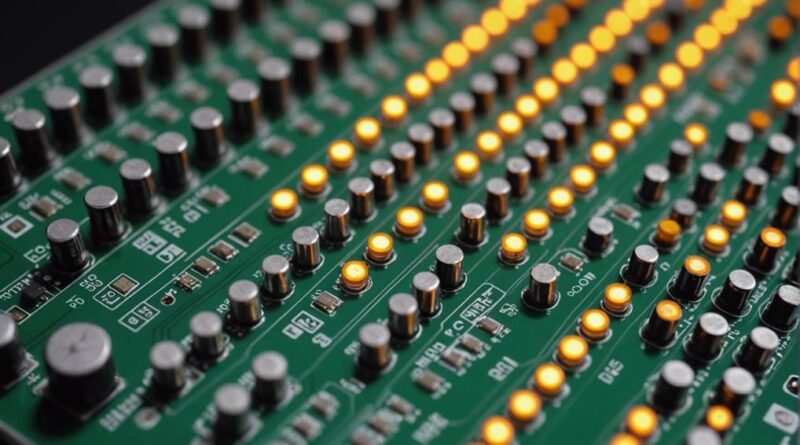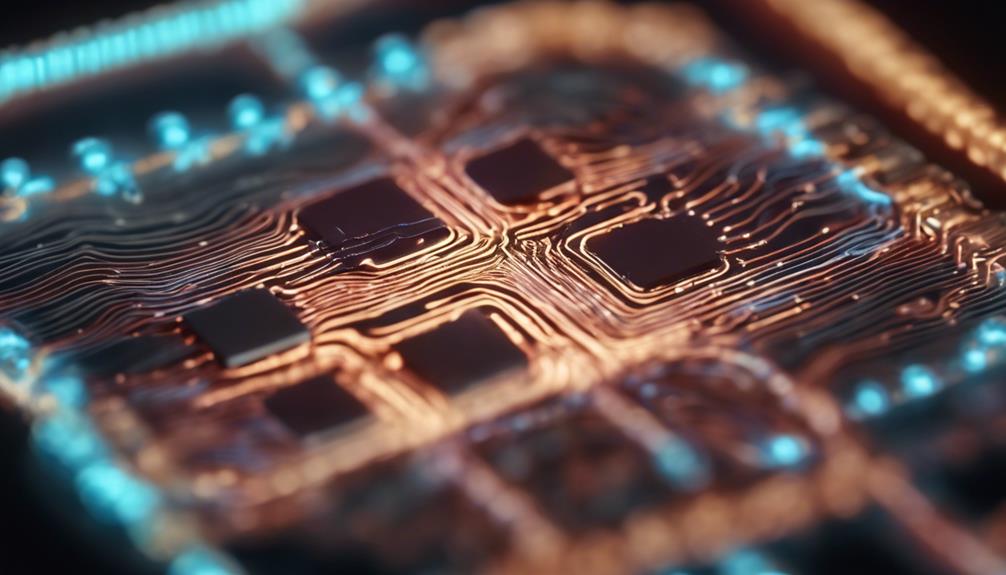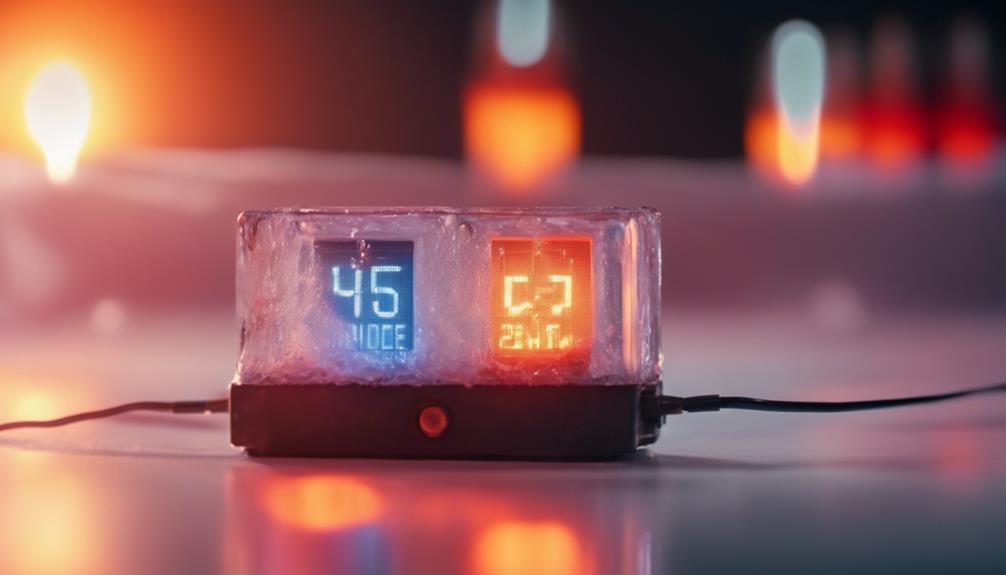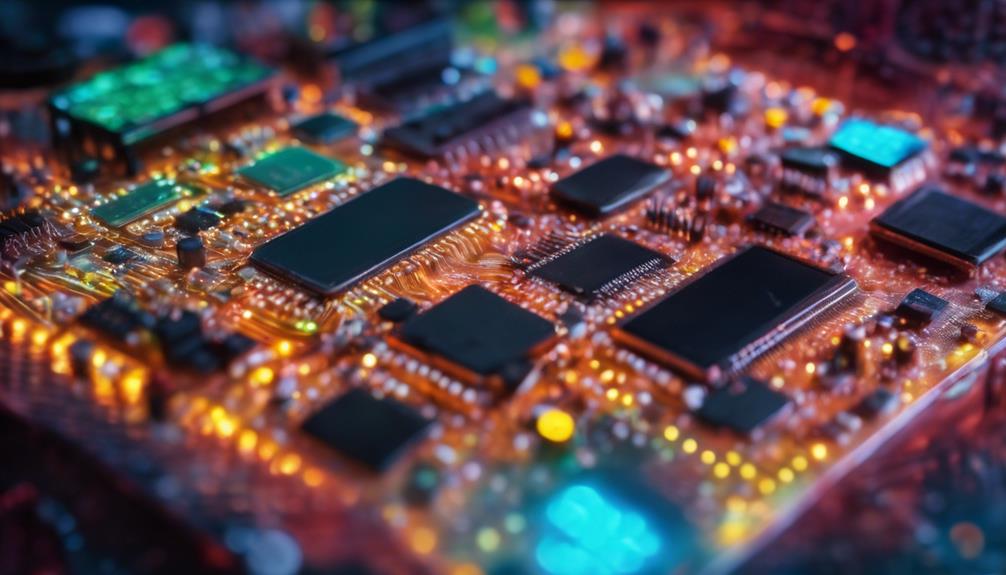
You've probably come across the term “diode,” but do you understand its crucial role in your electronic devices? Semiconductor component A diode allows current to flow mainly in one direction and acts as a central gatekeeper which prevents possible damage from reverse currents. Its ability to manage these flows is based on a Voltage-Current Relationship that contains a certain threshold value that must be exceeded for the current flow to begin. Diode properties are important for Conversion of alternating current to direct current making diodes indispensable in power supplies. But there is more to the functionality of a diode than meets the eye; Its behavior at different temperatures and the variety of types can significantly affect the overall performance of your circuit. Are you curious about how these factors interact and influence your technique?
The central theses
- Diodes allow current to flow in one direction and act as electrical check valves.
- They have a non-linear voltage-current relationship and conduct after a certain voltage threshold has been exceeded.
- Because they are made from semiconductors such as silicon or germanium, their electrical properties and applications are affected.
- They are sensitive to temperature fluctuations, which affects their performance and reliability.
- Special types such as Zener and Schottky diodes are designed for specific functions such as voltage regulation and low voltage drop.
Understand how diodes work

While diodes may seem complex, they primarily function as one-way valves for electrical current in circuits. This important ability comes from their structure and the specific materials from which they are made. Diodes generally consist of semiconductor materials such as silicon, germanium or gallium arsenide. These materials are important because they allow the diode to effectively control the direction of electrical current.
The main task of a diode is that Rectification process in which alternating current (AC) is converted into direct current (DC). It works like this: when alternating current flows through a diode, due to its properties, they block half of the waves and only allow those that move in one direction to pass. This manipulation of electrical flow converts alternating current into pulsating direct current.
Understanding this process will help you better understand how diodes are essential components in different electronic equipment. They ensure a safe and controlled flow of electricity, protect sensitive components, and increase the efficiency of electronic systems . So the next time you use a gadget or device, remember that there is probably a diode inside it that is working hard to manage electrical currents!
Voltage-current relationship
You will notice that the voltage-current relationship in diodes is significantly non-linear, mainly due to their unique semiconductor properties . This relationship is important for understanding how diodes work in various electronic circuits. Basically, a diode does not conduct current until the applied voltage reaches a certain point, the so-called diode limit . Below this limit the diode behaves almost like an open circuit , thus blocking the flow of electricity.
As soon as the voltage exceeds this limit, the diode suddenly begins to conduct, allowing current to flow almost unimpeded. This sudden change from non-conductive to conductive properties sharpens the nonlinear nature of the voltage-current diagram of diodes. Once the critical voltage is reached, it is like flipping a switch – from off to on.
However, if you reverse the polarity of the voltage – that is, apply a negative voltage – a diode blocks the current up to a certain high voltage. Beyond this point, known as Reverse Breakdown Voltage, the diode can no longer block the current and begins to conduct in the reverse direction. This reverse breakdown can cause permanent damage if the diode is not specifically designed for high reverse voltages, as shown in the figure. Zener diodes used for Voltage Regulation .
Effect of temperature on performance

Temperature fluctuations have a huge impact on the performance of diodes and affect how efficiently they conduct electricity. If you delve deeper into how diodes work, you will notice that their behavior is very sensitive to changes in temperature. This sensitivity can significantly impact your overall efficiency and functionality.
Understanding the relationship between temperature and diode performance is critical. Here are three important aspects:
- Thermal resistance : Diodes have a property called thermal resistance, which indicates how effectively they can dissipate heat. Higher thermal resistance means the diode retains more heat, which can lead to overheating and reduced lifespan.
- leakage current : At higher temperatures, the leakage current in the diodes increases. This unwanted current flows through the diode even though it is supposed to block current flow. You will notice that as the temperature increases, the functionality of the diode decreases, which can lead to possible errors in the circuit.
- Environmental Effects : Ambient temperature plays a crucial role in the performance of diodes. In high ambient temperature environments, diodes tend to present a direct voltage drop, which changes their performance parameters.
Think about these factors. They are crucial to the use and selection of diodes in your designs.
Types of diodes
Diodes come in different types, each designed for specific applications and characteristics. You will find that the choice of diode materials has a big impact on its performance. Silicon and germanium are the materials most used in the manufacture of diodes. Silicon diodes are preferred for their higher local temperature and better power handling capabilities. On the other hand, germanium diodes, although they have lower forward voltage are more susceptible to temperature changes and have a higher leakage current .
Additionally, there are several specific types of diodes that must be considered. For example, Zener diodes are crucial when voltage regulation is required. They allow current to return when a certain voltage is reached, making them ideal for protecting circuits by dissipating excessive voltages.
Another type is this Schottky Diode known for its very low forward voltage drop and high speed switching capability. This feature results from its unique metal-semiconductor junction construction rather than the standard p-n junction found in other diodes.
Light-emitting diodes (LEDs) and photodiodes also highlight the diversity of diode applications. By varying the semiconductor materials and processes used to produce diodes, they are specifically tailored to optimize them for emitting or capturing light. Each type has its unique place in the vast landscape of electronic components .
Applications in electronics

Diodes are essential in electronic circuits, from current rectification to voltage control. They are integrated into numerous applications that impact everyday technology. Let's see how they work specifically in electronics:
Signal rectification
Diodes convert alternating current (AC) into direct current (DC). This process is essential for almost every electronic device you plug into an electrical outlet. Without diodes, the functionality of these devices would be compromised, as direct current is the only type of electricity that most electronic devices can use.
Energy Conversion
Diodes are essential for powering laptops, smartphones and other portable devices. They ensure that electricity drawn from the socket is efficiently and safely converted into a form that can be used by your devices. This not only protects the device but also optimizes performance by regulating the flow of electricity.
Voltage regulation
Diodes help maintain constant voltage in circuits and prevent potential damage from voltage spikes. This control is crucial for sensitive electronics, as even small fluctuations can cause significant problems.
Conclusion
You have seen how diodes with their unidirectional flow are indispensable in electronics. They convert alternating current to direct current and regulate voltage through their unique Voltage-Current Relationship .
Temperature fluctuations affect performance and highlight the need for careful consideration in different environments . A variety of diodes are available so you can choose the one that best suits your application. Performance control for signal processing.
Understanding these characteristics of diodes will help you optimize circuits and protect devices, which is why diodes are essential in your electronics projects.

